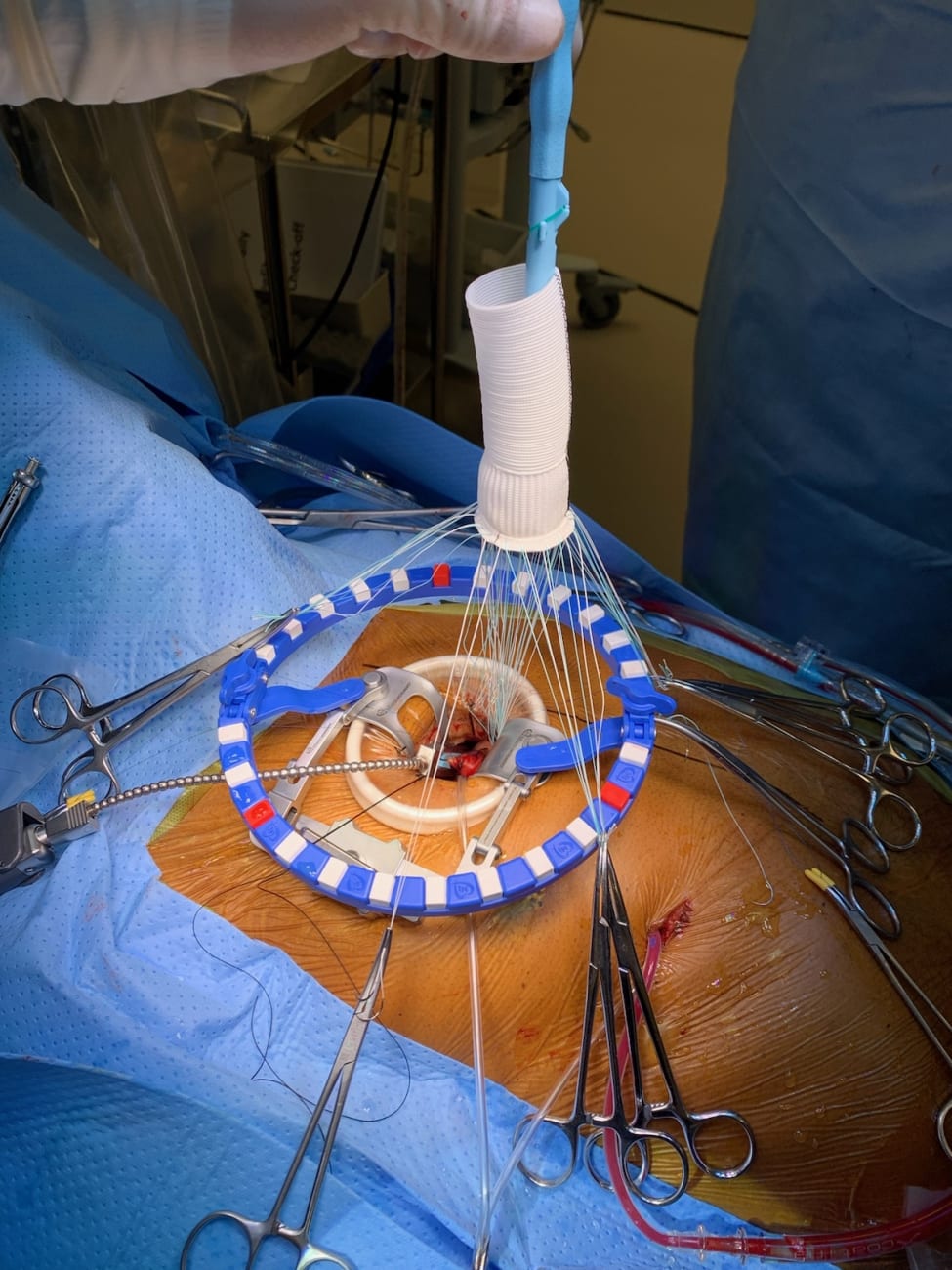
Cardiothoracic surgeon Dr. Neelan Doolabh, M.D., has performed more than 3,000 mini-thoracotomy cardiac surgeries through a two-inch intercostal incision. Now, Doolabh has achieved something even more challenging, performing a full bio-Bentall procedure using the same minimally invasive approach. Moreover, the surgery – completed at UTSW in 2020 – was the first mini-thoracotomy to use the Edwards KONECT aortic-valved conduit (AVG), which was approved by the FDA for use in July.

Neelan Doolabh, M.D.
“It’s very exciting that this is possible now,” says Dr. Doolabh, who is the director of the Minimally Invasive Heart Valve Surgery Program at UTSW. “This opens up new possibilities for patients, particularly younger patients with a need to quickly get back to work.”
Traditionally, a Bentall procedure – the replacement of not only an aortic heart valve but also the aortic root – requires a full sternotomy. Due to the time it takes for chest bones to heal, the recovery from this major operation averages eight to 12 weeks. In the past, a second drawback to traditional Bentall procedures has been the limited options for replacement valves to use in the surgery. Mechanical heart valves, which are more durable and lasting for younger patients, require lifelong anticoagulation. Bovine and porcine valves, on the other hand, avoid the need for anticoagulation but have a limited lifespan of 10 to 15 years.
Recently, two separate advancements helped tackle these challenges for patients. Minimally invasive surgeries have increasingly been used to replace heart valves, reducing complications and significantly shortening recovery times to as few as 10 days. While some centers claim to perform “minimally invasive” heart surgeries but still crack open a small part of the breastbone, the mini-thoracotomies performed by Dr. Doolabh at UTSW require only an incision between ribs, so no bones need to heal.
“Because there’s no broken bone, patients are back to their normal activities within a few days,” says Dr. Doolabh. “Even patients with quite physically demanding jobs can often be good to return to work at one month post-surgery.”

KONECT Valve
Secondly, Edwards Lifesciences developed INSPIRIS, a bovine pericardial valve that uses anti-calcification technology to protect against structural deterioration, lengthening its usable lifespan. The valve also integrates an expandable band that allows new transcatheter valves to be used within the existing valve, simplifying future surgeries for patients,including valve-in-valve transcatheter valve replacement. Last year, this technology was expanded to the KONECT AVG, which is a pre-assembly of the valve and aortic root graft.
An otherwise healthy 56-year-old woman with a 5 cm aortic root aneurysm approached Dr. Doolabh to inquire about a mini-thoracotomy in 2020. She lived alone and lacked a support system, making her concerned about the lengthy recovery time for a typical Bentall procedure. However, her relatively young age also made her hesitant about lifelong anti-coagulation.
“What was unusual here was that she wanted a minimally invasive surgery but needed a full Bentall,” says Dr. Doolabh. “I thought that her circumstances were unique in that she really needed to be independent quickly, and doing a mini-thoracotomy with the KONECT device just approved would be the best of both worlds for her. We could avoid Coumadin but also avoid dividing her sternum.”
Doolabh successfully performed the surgery, which took just 3 hours and 35 minutes to complete. The patient spent one night in the ICU, went home after four days, and resumed her normal activities – including driving, living independently and walking her dog – almost immediately.
“Even though I do these mini-thoracotomies every day, it’s still mind-boggling to me how we could do this full Bentall through a little opening,” says Dr. Doolabh. “So the big message to everyone out there, including other surgeons, referring cardiologists, and patients, is that this is possible.”
While mini-thoracotomies account for just 1 percent of all aortic valve replacement surgeries today, and even less for Bentall procedures, Dr. Doolabh says that almost all patients are good candidates for a minimally invasive approach. And the alternative surgery is particularly beneficial for younger and more active patients who have demanding jobs they need to return to.
“The bonus, other than having a new aortic valve and aortic root, is that once you do an operation in this way, your recovery time, your wound healing, your blood loss, and your ICU stay are all dramatically better,” he says.

